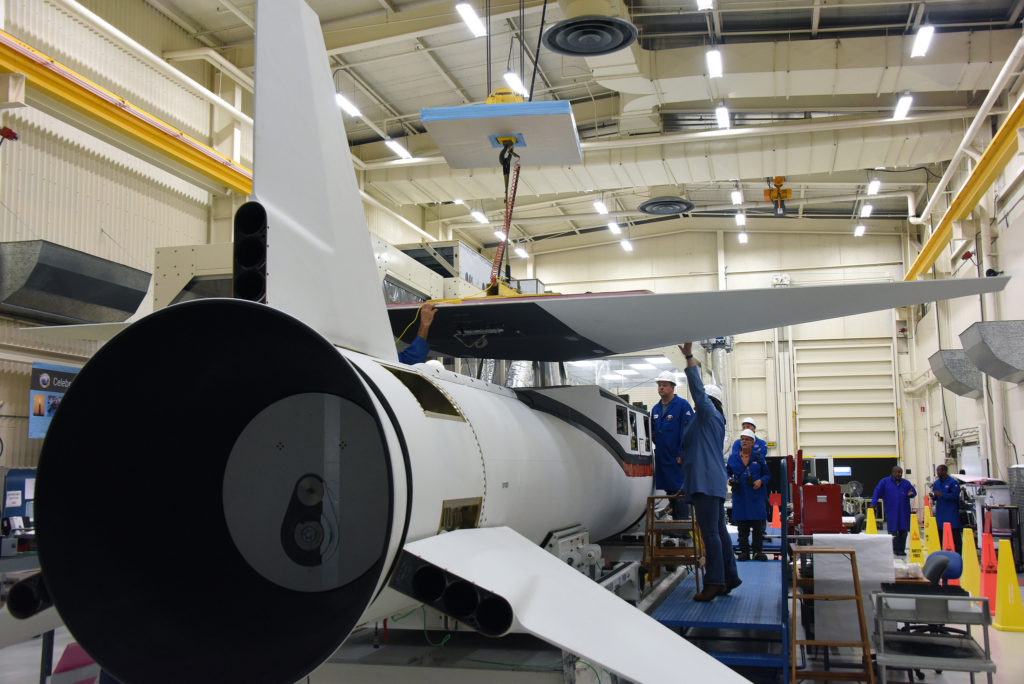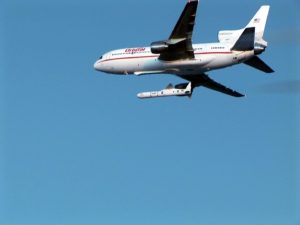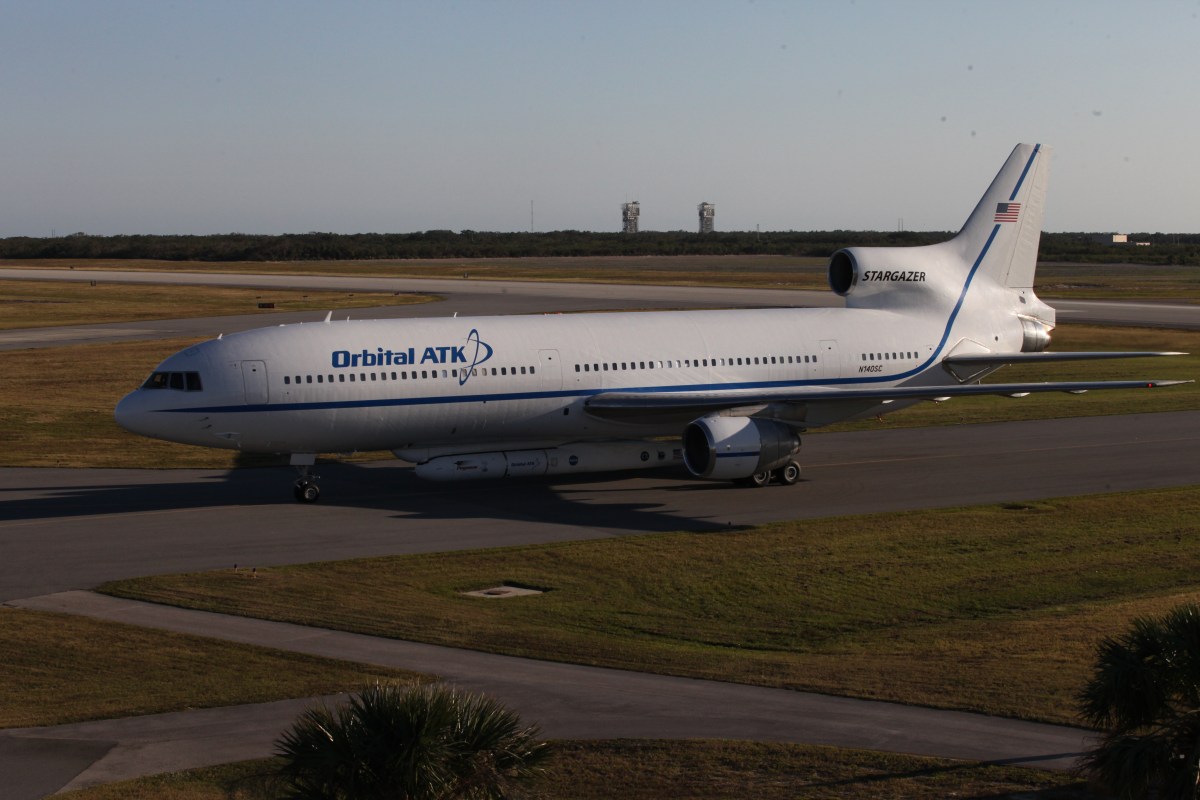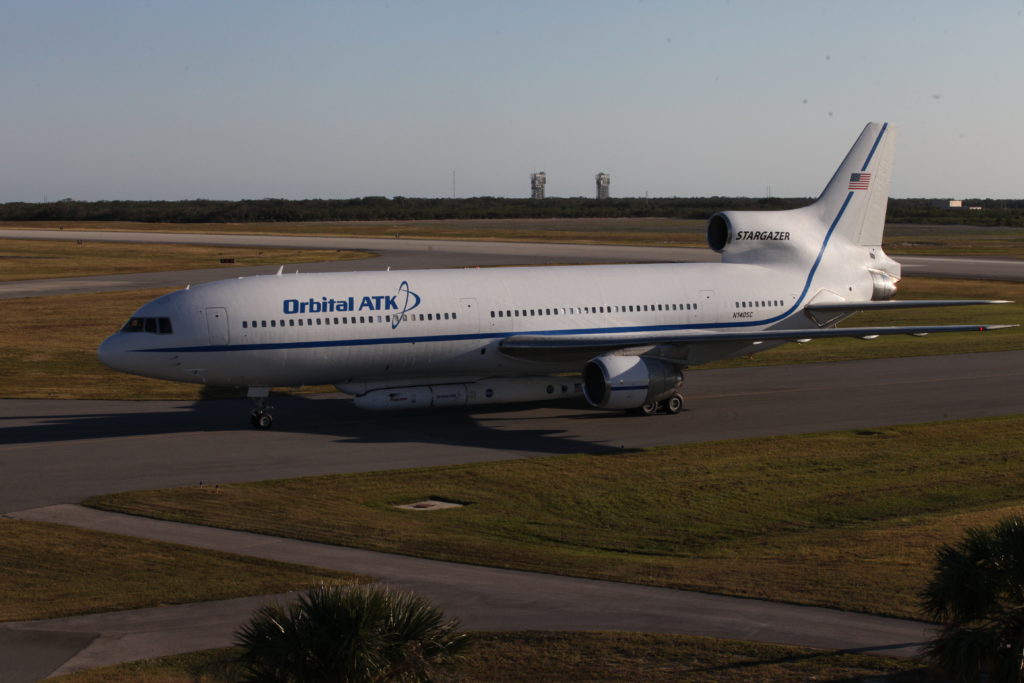Since Nov. 26, NASA’s Cyclone Global Navigation Satellite System (CYGNSS) team has not been able to make contact with one of the eight CYGNSS spacecraft, FM06. The team is currently still working to acquire a signal and establish a connection. The other seven spacecraft continue to operate normally and have been collecting science measurements since the FM06 anomaly.
CYGNSS is a constellation of eight small satellites taking measurements of ocean surface winds in and near the eye of the storm throughout the lifecycle of tropical cyclones, typhoons and hurricanes.
If the team isn’t able to reestablish contact, the FM06 satellite would primarily affect the constellation’s spatial coverage. However, the CYGNSS constellation could continue to meet its scientific requirements and objectives.
CYGNSS was launched Dec. 15, 2016 and completed its prime mission science objectives March 19, 2019. It has been operating in extended mission status since that time.




 Orbital ATK’s Pegasus rocket gets its payloads into space just like a conventional rocket, but instead of lifting off from the ground, the Pegasus starts its trip already in the air. That’s because a modified L-1011 airliner carries the Pegasus and its payload – CYGNSS in this case – to about 39,000 feet. Pegasus begins its solo flight by being released from the belly of the airliner.
Orbital ATK’s Pegasus rocket gets its payloads into space just like a conventional rocket, but instead of lifting off from the ground, the Pegasus starts its trip already in the air. That’s because a modified L-1011 airliner carries the Pegasus and its payload – CYGNSS in this case – to about 39,000 feet. Pegasus begins its solo flight by being released from the belly of the airliner.

 A revised forecast from the U.S. Air Force 45th Weather Squadron predicts deteriorating conditions and a 40 percent chance of favorable weather for the launch of NASA’s CYGNSS spacecraft. Launch is scheduled for 8:24 a.m. EST Monday, Dec. 12 aboard an Orbital Sciences ATK air-launched Pegasus XL launch vhicle, seen on the right beneath the L-1011 aircraft called “Stargazer” that will carry the rocket to a deployment altitude about 39,000 feet above the Atlantic Ocean.
A revised forecast from the U.S. Air Force 45th Weather Squadron predicts deteriorating conditions and a 40 percent chance of favorable weather for the launch of NASA’s CYGNSS spacecraft. Launch is scheduled for 8:24 a.m. EST Monday, Dec. 12 aboard an Orbital Sciences ATK air-launched Pegasus XL launch vhicle, seen on the right beneath the L-1011 aircraft called “Stargazer” that will carry the rocket to a deployment altitude about 39,000 feet above the Atlantic Ocean.